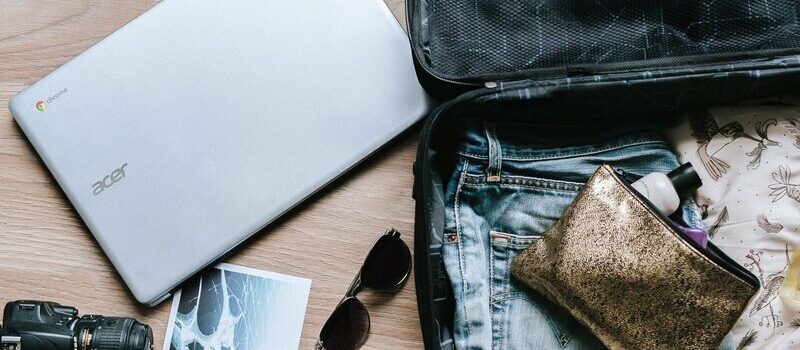Many people need to use laptops while taking the flight. However, these devices are dangerous belongings due to their lithium batteries. You may ask: “How many laptops can I bring on a plane?”
You can bring at least one laptop on the flight. However, the correct answer varies depending on the aviation regulation where you take off.
We will explain more about this aviation rule in this article. We also share some tips to get your computer ready for the flight. Let’s join us!
Contents
How Many Laptops Can I Bring On A Plane?
The Transportation Security Administration (TSA) doesn’t restrict the number of portable electronic devices brought on the plane. Hence, you may get one, two, or multiple laptops on domestic routes, and no one will care.
Laptops include lithium batteries. As a result, one may suppose that the government should limit the number of computers allowed on the airline.
On the other hand, TSA and FAA (Federal Aviation Administration) rule only apply to spare batteries and power banks.
Lithium batteries that come with the electronic gadget are generally acceptable.
On the TSA’s main site, there is no mention of carrying multiple laptops. As a result, it’s reasonable to conclude that numerous computers are allowed.
Unlike most airports, Virgin Australia prohibited all Macbook machines, regardless of the date of issue or type.
The current case is that most computers are permissible on flights, except the recalled Macbook.
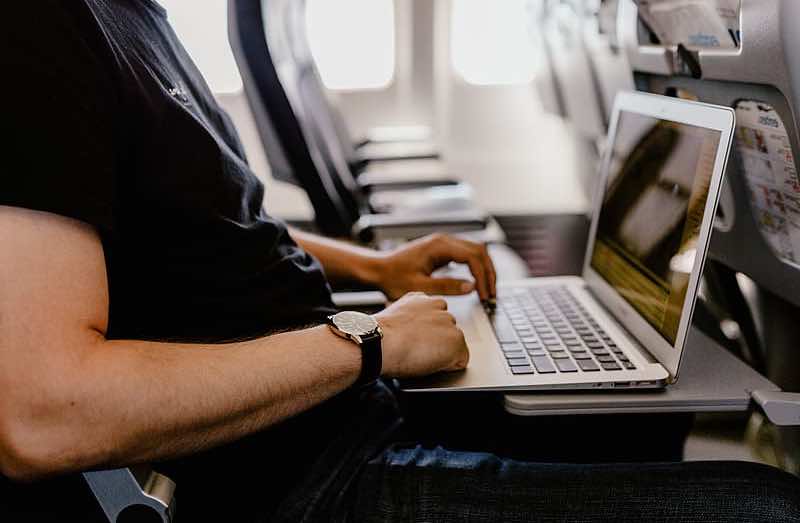
Be careful with the batteries on your device
Rules For Bringing Laptops on Planes
The correct answer for the question of “Can you bring laptops on airplanes?” differs from area to area.
The TSA and FAA are primarily in charge of flights within the United States. Other nations have various rules. Some have outlawed the carrying of electronic devices in checked luggage. When traveling overseas, be sure to double-check with the country and airline involved.
TSA
As aforementioned, TSA does not strictly limit the number of laptops on the flights. They put a restriction on the number of power banks and spare batteries you may carry with your devices.
IATA
IATA is the world’s biggest airline operator. It oversees more than 290 airlines across 120 countries and 82% of all trips, including Europe.
Laptops are permissible in both checked and carry-on luggage. However, it would help if you packed them with your carry-on items. Moreover, remember to switch them off or set them in sleep mode.
TCCA
TCCA is responsible for the flight system in Canada. According to this organization’s rules, you can bring your items in both checked and hand cases.
CAAC
Devices with more than 160 watt-hour batteries are not permissible on trips via China.
You’ll need authorization from the airlines if the laptop computer’s battery is between 100 and 160 watt-hours. Yet, you won’t need permission if the battery is less than 100 watt-hours.
You can bring the devices with replacement batteries weighing less than 160 watt-hours approved solely in hand luggage.
Each passenger can bring up to 15 laptops with 20 backup batteries.
CASA
CASA controls aviation across Australia. Laptops with batteries less than 160 watt-hours are acceptable in both checked and carry-on bags.
On the other hand, batteries with a capacity of more than 100 watt-hours, on the other hand, must get approved by the airline.
You must not carry batteries with a capacity of more than 160 watt-hours. Backup batteries with a power of fewer than 160 watt-hours are only acceptable for hand baggage.
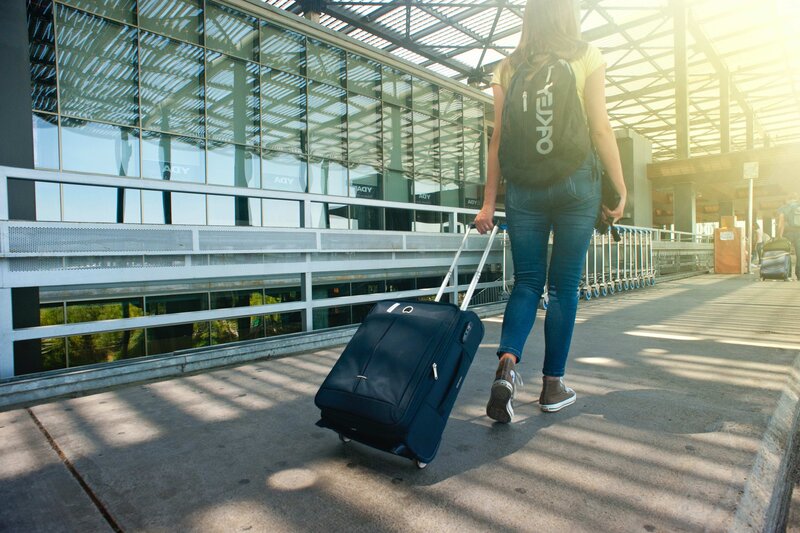
The rules are different from country to country
How To Prepare Your Laptop For The Fight?
You should prepare your laptop before the flight. Here are some things you need to check.
Battery
First, make sure that you have charged your device and can work with it. Alternatively, prepare the spare battery with you.
The officers at the security checkpoint may ask you to switch it on to prove that it is operational and has no interference.
They may refuse you entry to the plane or take your device if you are unable to switch it on.
Data
Another issue to keep an eye on is the privacy of your data. Security officers have permission to inspect everything on your device.
As a result, make sure it doesn’t include illegally downloaded films, software, or other critical information.
You may also put everything in a password-protected file so that no one else can access it to see what’s inside.
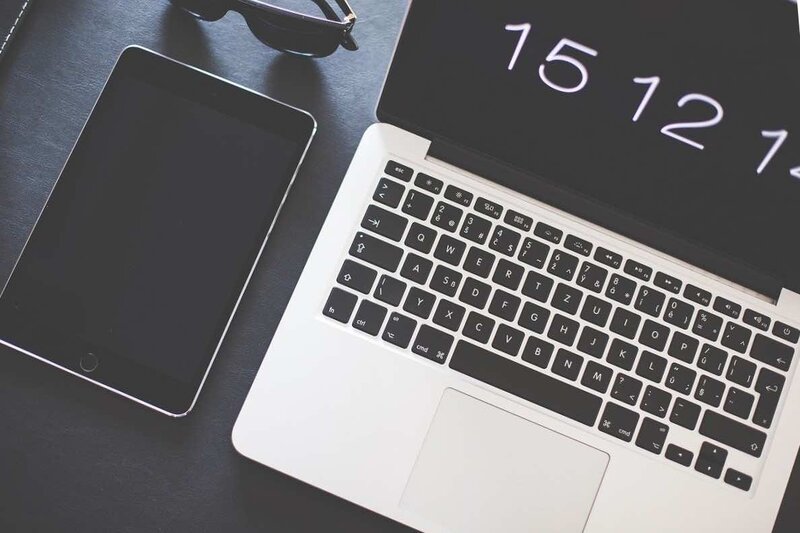
Keep a close eye on the data on your device
Passport
If you haven’t done so before, make a password for your computer. Due to travel pressure, you may lose or forget your luggage somewhere.
If your device is password secured, no one can access the data if this event happens.
Packing
Though you can pack the computer checked luggage, it’s not advisable to do so. Somebody may take your personal belongings from checked baggage, which is a common fact.
Alternatively, your belongings may get damaged. Your checked luggage may be lost. Because computers are expensive, it’s better to keep them in hand baggage.
It’s preferable to carry your laptop in a separate item like a backpack. Keep your computer under the front seat if you need to work on your flight.
When the person sitting beside you walks by and starts looking for their bag in the top container, it may not be very pleasant.
There is another convincing argument for keeping your computer on your personal property.
Officers at the security checkpoint may ask some passengers to check their carry-on luggage for free, especially if they book crowded flights.
You don’t have to repack your entire luggage at the entrance if you’re among one of those individuals.
Because you have packed your belongings in the backpack, there would be no worries about repacking.
Can You Use Laptops on Planes?
Most planes allow you to use your computer during the trip. They will, though, have to be folded up during takeoff as well as landing. They might become hazardous flying projectiles in the event of emergency or turbulence.
You must set your device to airplane mode on all international flights. In Airplane mode, though, you can connect to your wireless headsets using Wi-Fi and Bluetooth. You can also work with the plane’s Wi-Fi if it is available.
You may want to discover how Wi-Fi works on airplanes. This video will give you basic information about this connection.
Some flights now provide fast chargers. As a result, you can charge your computer on the plane.
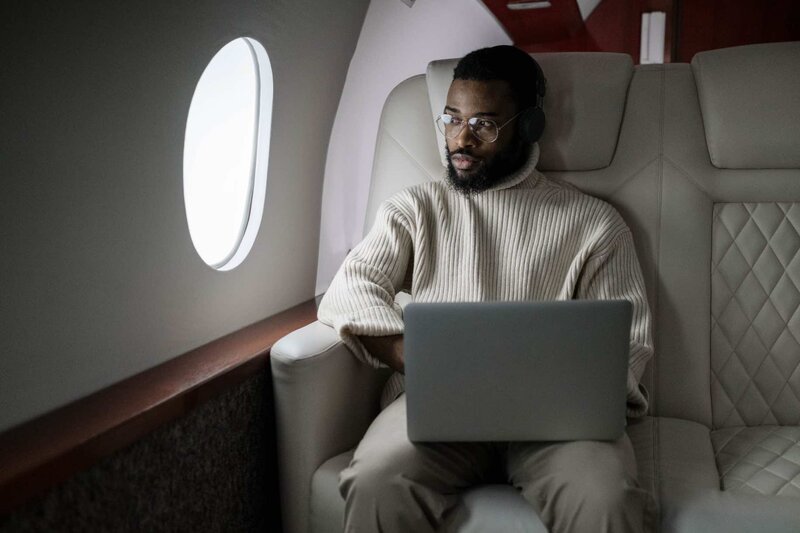
You can use your laptop computer during your flight
Frequently Asked Questions
Here are some frequently asked questions about carrying laptop computers on the plane. Let’s check the answer carefully because you may have the same problems.
1. Can I carry 3 laptops on a plane?
Often, you can carry up to three personal electronic devices, depending on the aviation rule. Some organizations do not limit the number of gadgets you pack.
2. How many laptops can I fly with?
Most airline regulators do not restrict the quantity limitations of portable electronic devices. They pay more attention to the lithium-ion batteries in your gadgets.
If the battery exceeds 100 watt-hours, you have to get permission from airport security.
3. How many laptops are allowed to carry in an international airplane?
Laptops are acceptable in carry-on luggage on international flights with no quantity restrictions.
There is one point you should bear in mind, though. It is quite OK to have one or two laptops for personal use, and the airport doesn’t charge you at all.
4. How can I go through the airport security with your laptops?
When entering the security, take your computer out of your backpack and put it in a separate bin to pass through the x-ray machine. If you carry more than one laptop, keep them in separate bins.
You don’t have to take your computers from your pack. Instead, you can place them in separate containers if you’ve carried multiple laptops in your suitcase and have been pre-checked.
Final Words
It might be challenging to travel with portable devices. You should be able to fly without stress if you follow the basic rules. Make sure you pack your laptop with your carry-on luggage, the battery is in place, and you have charged it.
Hopefully, you will find this article helpful. If you need any further information, please feel free to ask. Thank you for being interested in the post!

Paul Sullivan is the leading writer for articles on our website. He has over 10 years of experience as a technology reviewer, especially on laptops and computers.
With his long experience, we believe that he will bring you accurate and valuable knowledge and assessment.

